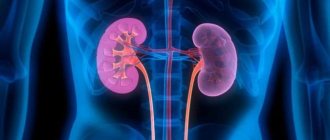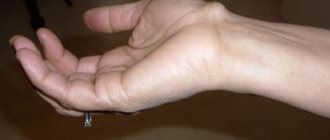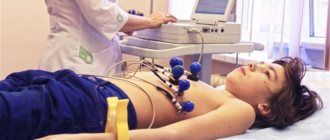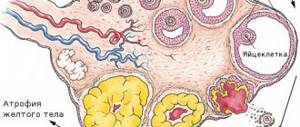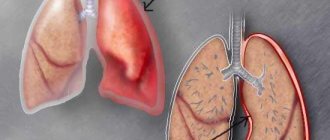Nervous system lesions
Disruption of the central and peripheral nervous systems (CNS and PNS, respectively) can be caused by various reasons - from congenital developmental pathologies to infectious lesions.
Diseases of the central nervous system can be accompanied by various symptoms. A neurologist treats such diseases.
All disorders of the central nervous system and PNS can be divided into several broad groups:
- vascular diseases of the nervous system;
- infectious diseases of the nervous system;
- congenital pathologies;
- genetic disorders;
- oncological diseases;
- pathologies due to injury.
It is very difficult to describe all kinds of diseases of the nervous system with a list, since there are a great many of them.
Treatment of nervous diseases
Many people are interested in the question of how to treat diseases of the nervous system. Remember: self-medication is dangerous, because irrational and inadequate therapy can not only aggravate the course of the pathology and cause harm, but also lead to persistent functional disorders that can seriously reduce the quality of life.
Symptoms and treatment of diseases of the nervous system are inextricably linked concepts. In addition to eliminating the main cause of the disease, the doctor prescribes symptomatic therapy to improve the patient’s condition.
As a rule, nervous diseases are treated in a hospital setting and require intensive care. Medicines, massage, physiotherapy are prescribed, but sometimes surgical operations are also performed.
Causes and symptoms of nervous system diseases
Infectious diseases of the nervous system develop as a result of the impact of an infection, virus or fungus on the body. The central nervous system is affected first, followed by the PNS. The most common pathologies of an infectious nature:
- encephalitis;
- syphilis of the nervous system;
- meningitis;
- polio.
Encephalitis is called inflammation of the brain, which can be triggered by viruses (tick-borne encephalitis, brain damage by the herpes virus). Also, the inflammatory process can be bacterial or fungal in nature. The disease is very dangerous and, if left untreated, can lead to dementia and death.
Neurosyphilis occurs in 10% of cases of infection with this venereal disease. The peculiarity of neurosyphilis is that the disease affects all parts of the central nervous system and PNS without exception. Syphilis of the nervous system causes the development of changes in the structure of the cerebrospinal fluid. The disease is characterized by a wide variety of symptoms, including those of meningitis.
Meningitis is a whole group of diseases. They are distinguished by the localization of inflammation, which can affect both the lining of the brain and the patient’s spinal cord. Pathology can be due to various reasons - from inflammatory processes in the middle ear to tuberculosis and trauma. This disease causes severe headaches, symptoms of intoxication and weakening of the neck muscles.
Poliomyelitis is a virus that can infect the entire human nervous system. This is a so-called childhood disease, which is characterized by the ease of transmission of the virus by airborne droplets. The virus quickly affects the entire body, causing various symptoms - from fever at the beginning of infection to paralysis. Very often, the consequences of polio do not go away without leaving a trace and a person remains disabled for life.
In diseases of the nervous system, symptoms are divided into several groups - signs of motor disorders, autonomic symptoms and signs of a general nature. When the PNS is damaged, a characteristic symptom is impaired skin sensitivity.
Nervous diseases are characterized by the following general symptoms:
- pain syndrome localized in different parts of the body;
- speech problems;
- psychoemotional disorders;
- motor impairment;
- paresis;
- tremor of fingers;
- frequent fainting;
- dizziness;
- fast fatiguability.
Movement disorders include paresis and paralysis, convulsions, involuntary movements, and a feeling of numbness in the limbs.
Symptoms of autonomic disorder include changes in blood pressure, increased heart rate, headache and dizziness.
Common symptoms are psycho-emotional disorders (apathy, irritability), as well as sleep problems and fainting.
The nervous system is responsible for the functioning and interconnection of all systems and organs of the human body. It combines the central nervous system, which consists of the brain and spinal cord, and the peripheral nervous system, which includes the nerves that arise from the brain and spinal cord. Nerve endings provide motor activity and sensitivity to all parts of our body. A separate autonomic (autonomic) nervous system inverts the cardiovascular system and other organs.
Diseases of the nervous system represent a wide and diverse field of pathologies of various etiologies and symptoms. This is explained by the fact that the nervous system is extremely branched, and each of its subsystems is unique. Most often, dysfunction of the nervous system has a detrimental effect on the functions of other internal organs and systems.
All diseases of the nervous system can be divided into vascular, infectious, chronically progressive, hereditary and traumatic pathologies.
Vascular diseases are extremely common and dangerous. They often lead to disability or even death of the patient. This group includes acute cerebrovascular accidents (stroke) and chronic cerebrovascular insufficiency, which causes changes in the brain.
Infectious diseases of the nervous system develop as a result of the pathogenic effects of various viruses, bacteria, fungi and parasites. The brain is predominantly affected, with the peripheral nervous system and spinal cord being less commonly affected. Common diseases in this group are encephalitis, malaria, measles, etc. Symptoms of neuroinfections include fever, disturbances of consciousness, severe headache, nausea and vomiting.
Hereditary diseases of the nervous system are divided into chromosomal (cellular) and genomic. The most common chromosomal disease of the nervous system is Down's disease, and genomic pathologies most often affect the neuromuscular system. Characteristic signs of such disorders are dementia, infantility, disorders of the endocrine system and the musculoskeletal system.
Traumatic injuries to the nervous system occur due to injury, contusion, or compression of the brain or spinal cord. These include concussion. Accompanying symptoms are headache, disturbances of consciousness, nausea and vomiting. memory loss, decreased sensitivity, etc.
Found an error in the text? Select it and a few more words, press Ctrl Enter
It was mentioned above that among the causes of diseases of the nervous system, various infectious agents very often appear: - bacteria (pneumococcus, meningococcus, staphylococcus, Treponema pallidum and streptococcus); - various fungi and parasites; - airborne viruses (arboviruses).
Also, diseases of the nervous system can be transmitted placentally during pregnancy (cytomegalovirus, rubella) and through the peripheral nervous system. For example, rabies virus, herpes, acute polio and meningoencephalitis are spread this way.
Common causes of diseases of the nervous system also include brain contusions, brain tumors or their metastases, vascular disorders (thrombosis, ruptures or inflammation), heredity or chronic progressive diseases (Alzheimer's disease, chorea, Parkinson's disease, etc.)
Insufficient nutrition, lack of vitamins, heart, kidney and endocrine diseases also affect the nervous system. Pathological processes can develop under the influence of various chemicals: opiates, barbiturates, antidepressants, ethyl alcohol, poisons of animal and plant origin.
Symptoms of nervous system diseases manifest themselves in different ways, very often in the form of movement disorders. The patient typically develops paresis (decreased muscle strength) or paralysis, inability to move quickly, tremor, and involuntary rapid movements (chorea). The appearance of pathological postures (dystonia) is also possible.
Other important symptoms of nervous system diseases are headache (migraine), pain in the back and neck, arms and legs. Pathological changes also affect other types of sensitivity: smell, taste, vision.
Diseases of the nervous system include epileptic seizures, hysterics, disturbances of sleep and consciousness, mental activity, behavior and psyche.
Diagnosis of diseases of the nervous system involves a neurological examination of the patient. His consciousness, intelligence, orientation in space and time, sensitivity, reflexes, etc. are subject to analysis. Sometimes the disease can be identified based on clinical indicators, but most often the diagnosis requires additional research.
Lumbar puncture, radiography or electroencephalography are also used to diagnose diseases of the nervous system.
Other research methods include biopsy, blood test, etc.
Treatment of diseases of the nervous system depends on their type and symptoms, is prescribed by a doctor and requires intensive care in a hospital setting.
To avoid diseases of the nervous system, you should diagnose and treat infections in a timely manner, lead a healthy lifestyle, avoid alcohol and drugs, eat nutritiously, and avoid stress and overwork. If any alarming symptoms appear, you should definitely consult a doctor.
The nervous system is the regulator of almost all processes occurring in any living organism. Thanks to its activity, the interconnected work of all organs occurs. Therefore, health disorders of this system have extensive symptoms and are often life-threatening.
Since diseases of the human central and peripheral nervous system are very diverse, their classification has been developed. It includes the following sections:
- Vascular diseases. These conditions are associated with impaired blood supply to areas of nervous tissue: stroke, chronic cerebral vascular insufficiency. They are usually a consequence of other pathologies, such as hypertension, atherosclerosis, and congenital changes in the walls of blood vessels.
- Infectious processes. They occur when exposed to pathogenic microflora. These include meningitis, encephalitis, botulism, and rabies.
- Hereditary diseases. These processes are transmitted from parents to children and manifest themselves over several generations. These include Parkinson's syndrome, epilepsy, Huntington's chorea, and neurofibromatosis.
- Neoplasms. This pathology can be benign (meningiomas, gangliomas) or malignant (meduloblastomas, sarcomas, metastases of tumors of internal organs). Any tumor of nervous tissue can pose a risk to life, since as it grows it compresses surrounding tissue.
- Diseases of peripheral nerves (radiculitis, neuritis, polyneuropathy).
Symptoms of nervous diseases
The location of the lesion, type of disorder, severity, individual characteristics and concomitant pathology determine which symptoms are most likely to develop in nervous diseases.
The main symptoms of a disease of the human nervous system are motor disorders: paresis (decreased muscle strength), paralysis (complete lack of movement), tremor (constant twitching), chorea (rapid movements), etc. Sensitivity disorders often occur in the areas for which the affected areas of the nervous tissue are responsible.
Almost all diseases are accompanied by pain of varying intensity (headache, pain in the neck, back of the head, back, etc.), dizziness. Appetite, sleep, vision, mental activity, coordination of movements, behavior, vision, hearing, and speech are often disturbed. Patients complain of irritability, decreased performance and deterioration in general well-being.
Signs of a nervous disease can appear brightly and quickly or develop over years. It all depends on the type and stage of the pathology and the characteristics of the body. In general, all nervous disorders lead to dysfunction of internal organs and systems that are associated with the affected area.
Vascular diseases of the central nervous system
The center of the central nervous system is the brain, so vascular diseases of the nervous system are characterized by disruption of its functioning. These diseases develop due to the following reasons:
- impaired blood supply to the brain;
- damage to cerebral vessels;
- pathologies of the cardiovascular system.
As you can see, all these reasons are closely interrelated and often one stems from the other.
Vascular diseases of the nervous system are lesions of the blood vessels of the brain, for example, stroke and atherosclerosis, aneurysms. A feature of this group of diseases is the high probability of death or disability.
Thus, a stroke provokes the death of nerve cells. After a stroke, complete rehabilitation of the patient is most often impossible, which leads to disability or death.
Atherosclerosis is characterized by hardening of the walls of blood vessels and further loss of elasticity. The disease develops due to cholesterol deposits on the vascular walls and is dangerous due to the formation of blood clots that provoke a heart attack.
An aneurysm is characterized by thinning of the vascular wall and the formation of a thickening. The danger of the pathology is that the seal can burst at any moment, which will lead to the release of a large amount of blood. Aneurysm rupture is fatal.
Causes
The causes of diseases of the nervous system are numerous, and almost everyone faces them. Of course, diseases can develop due to genetic abnormalities, but most often the pathology appears against the background of constant stress, a sedentary lifestyle, chronic diseases, intoxication, traumatic injuries, infections, as well as poor ecology. Complications during pregnancy and labor disturbances are increasingly observed, which lead to serious consequences in the future.
The risk of developing diseases increases with age, although today there is a rejuvenation of diseases.
Peripheral disorders
The nervous system is necessary to control mental processes in the human body. A person owes the ability to be happy, sad, think, move in space, etc. to his nervous system. It is thanks to it that the body is able to quickly adapt to constantly changing conditions.
The role of the nervous system can be judged by the consequences that arise as a result of disruptions in its functioning due to illness. A person who has lost an arm or leg continues to remain a full-fledged member of society. He can hold a leadership position, drive a car, write a book, defend a dissertation.
The absence of disturbances in one of the main systems of our body determines the quality of life as a whole. According to statistics, in 80% of cases the cause of a dangerous disease is directly related to the state of the psyche.
According to experts, a person can live at least seven hundred years, provided that he is not exposed to serious stress.
The nervous system consists of two main elements: central and peripheral, which, in turn, includes 2 components - autonomic and somatic. The autonomic nervous system consists of the sympathetic and parasympathetic nervous systems. The central nervous system includes the brain and spinal cord.
A neurologist consulted by a patient suffering from ANS diseases may recommend undergoing an examination. One of the most effective methods of treatment is normalization of nutrition. Salty, fatty and spicy foods should be completely excluded from the patient's diet.
In addition, the patient needs to reconsider his habits and lifestyle. It was probably they who led him to the disease. You should stop smoking and drinking alcohol too often. If the patient has a sedentary job, it is necessary to replace passive leisure with active one: go in for sports, spend more time in the fresh air.
Physiotherapeutic methods are also successfully used in treatment. On the advice of a doctor, you can take a course of acupuncture or massage, or do yoga.
Somatoform dysfunction of the autonomic nervous system is a condition of the body characterized by a violation of the neurohumoral regulation of the functioning of some internal human organs. The appearance of dysfunction is caused by several factors: stress, difficult childbirth, hormonal imbalance, infections, injuries, etc.
Only the attending physician can determine the presence of a problem. However, the patient himself is able to identify a disease in himself, the obvious signs of which are uneven distribution of excess fat deposits, meteophobia, pale skin and some others.
Treatment of dysfunction will depend on its etiology. People prone to increased anxiety. need to undergo psychotherapy. The patient needs normalization of his daily routine. A good night's sleep should last at least 8-10 hours. You should reduce the number of hours spent in front of the computer or TV. The patient may also require physiotherapeutic procedures: electrosleep. ultrasound, galvanization. circular shower, etc.
In most cases, one or more of the listed treatment methods is enough for the patient to completely get rid of the disease. If none of these methods help, the doctor prescribes medication. The patient is taking antipsychotics. psychostimulants and tranquilizers. Sometimes drugs can be replaced with herbal infusions.
Peripheral diseases of the nervous system can occur as a complication of other pathologies, as well as due to tumors, surgical interventions or injuries. This group of disorders is very extensive and includes such common diseases as:
- neuritis;
- polyneuritis;
- radiculitis;
- neuralgia.
All these diseases develop as a result of damage to peripheral nerves or nerve roots, as a result of exposure to some negative factor.
As a rule, such disorders develop as a secondary disease against the background of infectious or viral lesions of the body, chronic diseases or intoxication. These pathologies often accompany diabetes mellitus and are observed in drug and alcohol addicts due to intoxication of the body. Vertebrogenic syndromes are distinguished separately, which develop against the background of spinal diseases, for example, osteochondrosis.
Treatment of pathologies of peripheral nerves is carried out using drug therapy, less often – surgery.
There are a number of diseases of the nervous system that are accompanied by psycho-emotional disorders. Such diseases include dystonia, chronic fatigue syndrome, panic disorders and other disorders. These diseases develop as a result of the negative effects of stress, lack of nutrients and nervous overstrain, and are characterized by depletion of the human nervous system.
As a rule, the inert nervous system, which is characterized by excessive sensitivity, is more susceptible to such disorders. This type is characterized by low mobility of nervous processes. Inhibition in the central nervous system is slowly replaced by excitation. People with such a nervous system are often susceptible to melancholy and hypochondria.
Treatment of psycho-emotional disorders accompanying somatic symptoms involves relieving tension in the nervous system, stimulating blood circulation and normalizing lifestyle.
If you find any alarming symptoms, you should visit a neurologist. The doctor will conduct an examination and check the patient’s reflex activity. Then you may need additional examination - MRI, CT, Dopplerography of cerebral vessels.
Based on the results of the examination, treatment is prescribed, depending on what disorder is diagnosed.
Pathologies of the central nervous system and PNS are treated with medications. These may be anticonvulsants, drugs to improve cerebral circulation and improve vascular permeability, sedatives and antipsychotics. Treatment is selected depending on the diagnosis.
Congenital pathologies are often difficult to treat. In this case, treatment involves measures aimed at reducing the symptoms of the disease.
It should be remembered that the chances of getting rid of an acquired disease at the beginning of its development are much higher than when treating the disease in its final stages. Therefore, if you notice symptoms, you should visit a specialist as soon as possible and not self-medicate. Self-medication does not bring the desired effect and can significantly aggravate the course of the disease.
They constitute a large group of diseases. They are characterized by a certain localization. The reasons for their occurrence are varied: infection, vitamin deficiency, intoxication, circulatory disorders, injuries and much more.
Peripheral nervous system diseases are very common among lost time illnesses. These include neuritis and neuralgia. The former are characterized by pain and disruption of various functions: sensitivity, range of motion and reflexes change.
With neuralgia, the functions of the damaged nerve areas are preserved. They are characterized by sharp pain, in which sensitivity and range of motion are not impaired.
These neurological diseases are classified according to various criteria:
- Based on the type of pathogen, they are divided into fungal, viral and bacterial.
- Depending on the method of infection penetration: contact, airborne, hematogenous, perineural, lymphogenous.
- From the localization of the source of infection - meningitis, in which the soft or dura mater is affected. If the infection has affected the substance of the brain, the disease is classified as encephalitis, and spinal - myelitis.
Disorders of the central nervous system were discussed above. But the problems do not end there. There are disorders of the autonomic nervous system, the symptoms and treatment of which will be discussed below.
The autonomic system is responsible for the functioning of all internal organs. If they receive the wrong signals from her, their well-being will seriously deteriorate. In this case, the symptoms may be similar to those of other diseases - for example, osteochondrosis or ischemic heart disease.
The main causes of ANS disorders are as follows:
- genetic predisposition;
- hormonal imbalances;
- chronic stress;
- intoxication due to inflammatory processes or long-term use of potent drugs;
- allergic diseases;
- surgical interventions that disrupt nerve connections.
Nervous system. Congenital diseases
Pathologies of the nervous system in a child can be caused by a genetic mutation, heredity, or birth trauma.
The causes of the pathology may be:
- hypoxia;
- taking certain medications in early pregnancy;
- trauma during passage through the birth canal;
- infectious diseases suffered by a woman during pregnancy.
As a rule, childhood diseases of the nervous system appear from birth. Genetically determined pathologies are accompanied by physiological disorders.
Among the genetically determined pathologies:
- epilepsy;
- spinal muscular atrophy;
- Canavan syndrome;
- Huntington's chorea;
- Tourette's syndrome.
Epilepsy, as we know, is a chronic disease that is inherited. This disease is characterized by convulsive seizures, which cannot be completely eliminated.
Spinal muscular atrophy is a severe, and often fatal, disease associated with damage to the spinal cord neurons responsible for muscle activity. The patients' muscles are not developed and do not work, movement is impossible.
Canavan syndrome is a disorder of brain cells. The disease is characterized by an increase in the size of the skull and mental retardation. People with this pathology cannot eat due to impaired swallowing function. The prognosis is usually unfavorable. The disease cannot be cured.
Huntington's chorea is characterized by impaired motor skills, development of tics, and progressive dementia. Despite the genetic prerequisites for development, the disease manifests itself at an older age - the first symptoms appear at 30-60 years of age.
Tourette's syndrome is a disorder of the central nervous system that causes involuntary movements and shouting (tics). The first symptoms of pathology appear in preschool age. In childhood, this disease causes a lot of discomfort, but with age the symptoms become less pronounced.
You can suspect a dysfunction of the central nervous system in an infant if you carefully monitor the child's development. The reason for contacting a neurologist is delayed mental and physical development, vision problems or weakened reflexes.
Tumors can be located in any organ, including the brain and spinal cord.
Oncological disease of the human nervous system develops between the ages of 20 and 55 years. Tumors can affect any part of the brain.
Tumors can be either benign or malignant. Lymphoma of the central nervous system is common.
There are a lot of them, they can affect various organs and systems. Congenital diseases of the nervous system are a pressing problem. They develop simultaneously with the intrauterine development of the fetus, and are persistent defects of the whole organ or some part of it. The most common congenital diseases of the nervous system: cranial hernia, anencephaly, heart defects, esophagus, cleft lip, limb defects, hydrocephalus and others.
One of them is syringomyelia. This is a type of nervous system disease in children. They are characterized by the fact that connective tissues grow and cavities form in the gray matter of the spinal cord and brain. The cause of the disease is a defect in the development of the embryonic brain. This pathology is provoked by infections, injuries, and heavy physical labor.
Pathogens of infections of the nervous system
Bacteria:
- Neisseria meningitidis (bacterium that causes infectious meningitis);
- Staphylococci (golden), streptococci (pneumoniae, agalactiae), enterococci, E. coli, Hemophylus influenza (source of secondary meningitis, brain abscesses);
- Pseudomonas aeruginosa, enterobacteria (can cause meningoencephalitis, abscesses and empyema of soft membranes);
- Mycobacterium tuberculosis, leprosy (damage to the soft membranes of the brain and spinal cord, abscesses);
- Clostridia (the causative agent of tetanus - affects the central nervous system through a neurotoxin produced by bacteria);
- Borrelia (Lyme borreliosis at the terminal stage causes chronic meningitis, transverse myelitis, mononeuritis, encephalopathy progresses against the background of the disease);
- Treponema pallidum (the causative agent of neurosyphilis, which is accompanied by meningomyelitis, the formation of granulomas in the brain and spinal cord, and mental disorders in the later stages);
- Brucella (the causative agents of brucellosis provoke acute and chronic meningitis, encephalitis, neuritis).
Viruses:
- Japanese encephalitis flavovirus;
- Picornovirus polio (causes meningitis, myelitis, damage to cranial nerves);
- Paramyxovirus mumps (“mumps” in severe cases leads to meningitis and encephalitis);
- Measles virus (causes acute and subacute encephalitis);
- Influenza (often complicated by meningitis, encephalitis, neuritis);
- Rabies (affects the nervous system);
- Herpes viruses (the causative agent of meningitis, encephalitis in weakened patients, in the elderly it causes ganglioneuritis);
- Coxsackie A viruses (enteroviruses that cause aseptic meningitis in children);
- Cytomegalovirus (in weakened children causes encephalitis and other damage to the nervous system);
- Estein-Barr virus (meningitis, encephalitis, myelitis, acute cerebellar ataxia);
- Rubella.
Neuroinfections include prion diseases (mad cow disease, Kuru), parasitic infestations (toxoplasmosis, amebiasis, malaria), fungi (candidiasis, cryptococcosis).
ICD 10
Infectious diseases belong to sections A and B in the international classification of diseases (some infectious and parasitic diseases). For example, CNS viruses are included in a separate section.
| A 80-89 | Viral infections of the central nervous system |
The remaining diseases will be encrypted according to the pathogen. For example, neurosyphilis - A 52.3. If the disease of the central nervous system is not the main one, but only complicates the course of the infection, it is encrypted with code B and G (diseases of the nervous system). For example, measles complicated by meningitis - B05.1 and G02.0. Some infectious diseases of the central nervous system are coded based on the location of the lesion. For example, meningitis.
| G00.0 | Influenza meningitis |
| G00.1 | Pneumococcal meningitis |
| G00. 2 | Streptococcal meningitis |
| G00.3 | Staphylococcal meningitis |
Consequences of neuroinfections
Most often, with adequate treatment, the infectious agent leaves no trace of its presence in the body. But nervous tissue is extremely sensitive to inflammation, so after the disease there may be unpleasant consequences of the disease that can last throughout life.
Consequences of neuroinfection:
- Frequent headaches;
- Meteosensitivity;
- Loss of function (partial or complete loss of vision, hearing, speech);
- Loss of body sensitivity zones;
- Impaired motor function of the limbs;
- Memory problems;
- Mental disorders;
- Convulsive or epileptic seizures.
Disability after neuroinfection
In most cases, infectious damage to the brain is acute and ends with complete recovery. But, unfortunately, there are also severe variants of the disease. The consequences of neuroinfection remain with the patient for many years. Important functions are lost, and the ability to perform professional duties may be lost. The issue of examining a patient for medical examination is decided individually.
Establishing a disability group is possible in the case of a pronounced impairment of one or another function (for example, paresis of a limb, epileptic seizures, loss of hearing, vision). The decision to send documents for medical and social examination is made by the attending physician. It determines the scope of further examination of a patient who has been discharged from the hospital or is still undergoing hospital treatment.
If the patient considers himself incapacitated and requires an examination, and the attending physician and the head of the department see no reason for this, then the patient can send the documents and application to the ITU in person.
Diagnostics
Damage to the nervous system is indicated by characteristic symptoms. In addition to questioning and examination, specialists use examination methods such as radiography, magnetic resonance and computed tomography to assess hemorrhages and injuries, electroencephalography, angiography of cerebral vessels, ultrasound, and electromyography.
In some cases, a spinal puncture with sampling of cerebrospinal fluid, a biopsy of a tissue section, followed by histological examination are used. To determine inflammatory processes, a general and biochemical blood test is performed.
The most common diseases of the nervous system
An acute, sudden disturbance of the blood circulation of parts of the brain. This pathology is one of the most common causes of disability and death. The cause of this condition is hemorrhage or blockage of blood vessels in the brain.
Symptoms: the picture of the disease depends on the affected area of the brain. Most often, a stroke manifests as a disturbance of consciousness from mild stupor to a sharply developing coma. Severe headache, dizziness, and vomiting are often the first signs. In addition, paresis and paralysis, unsteadiness of gait, and speech disorders are often observed.
The speed of diagnosis and provision of qualified assistance in this case directly affects the preservation and quality of future life.
Encephalopathies
A group of organic brain damage of a non-infectious nature. This condition can be caused by natural (pregnancy) or pathological reasons (alcohol and drug intoxication, trauma, diabetes, chronic disorders of the blood supply to the brain). It manifests itself as sleep disturbances, memory disorders, apathy, headaches, depression, and irritability.
Encephalopathy in pregnancy is temporary and usually does not require medical intervention. Pathological types of this disease require a long course of treatment and depend on the cause of the disease and the severity of the lesion.
A very unpleasant disease characterized by inflammation of the nerve of the same name. It has 3 branches and is responsible for the innervation of the forehead, eye orbits, cheeks, upper and lower jaw. Symptoms of the disease are sharp, paroxysmal pain along one or more branches, violation of facial symmetry, incomplete closure of the eye, drooping of the corner of the eye and mouth, and lacrimation.
Treatment of this disease should be aimed at the cause that caused it. To alleviate the condition, painkillers and anti-inflammatory drugs, B vitamins are used. Physiotherapy has a good effect: electrophoresis, acupuncture.
The manifestation of any symptoms of diseases of the central and peripheral nervous system should not be ignored. Prompt diagnosis of these disorders and their treatment can increase life expectancy and improve its quality.
Slanko Anna Yurievna
Was the page useful? Share it on your favorite social network!
Varieties
The nervous system is:
- Central. It consists of the brain: the brain, located in the skull, and the spinal cord, the location of which is the spinal column.
- Peripheral. This is a huge number of nerves that penetrate all human organs and tissues. They pass in close proximity to blood and lymphatic vessels. This system consists of sensory and motor fibers.
Nerve cells are distinguished by their ability to be excited and carry out this state. Irritation of the nerve endings of the skin, tissue of some internal organ or muscle is perceived by sensory fibers and transmitted first to the spinal cord and then to the brain. The central nervous system processes this information, and the decision made is transmitted to the motor fibers.
This is why muscles can contract, the pupils of the eyes change in size, juice is secreted in the stomach, and so on. These actions are called reflex actions. They permeate all the activities of our body, which, thanks to this mechanism, are constantly regulated. This is how a person adapts to any environmental conditions. Any disease of the nervous system disrupts its functioning. They definitely need to be treated.
Multiple sclerosis
It is a chronic nerve disease that is progressive and is characterized by the formation of plaques in the spinal cord and brain. It begins at the age of twenty to forty. Sclerosis is more often observed in men than in women. Its progression occurs in waves: improvement is replaced by exacerbation.
In patients, tendon reflexes increase, vision becomes blurred, speech is scanned, and intentional trembling appears. The disease occurs in various forms. In acute and severe cases, blindness and cerebellar disorders quickly develop. In mild cases of the disease, the nervous system recovers quickly.
Some symptoms of brain and spinal cord damage
Signs of central nervous system disease are usually grouped into syndromes that can be easily detected during a neurological examination. Typically, symptoms of diseases of the central system are manifested by the following disorders:
- voluntary movement disorders.
These are paralysis or partial paralysis (paresis). Moreover, they should be central, that is, in addition to weakness and lack of full movement, muscle spasticity occurs, and tendon reflexes increase, pathological reflexes appear;
- disorders of consciousness.
This group includes epilepsy and episyndrome . It must be remembered that many metabolic or destructive comas, without being diseases of the nervous system, are manifested by disturbances of consciousness (diabetic, hypoglycemic, and many others);
- movement coordination disorders, hyperkinesis, tremor, changes in gait, dizziness, imbalance, akinesis, muscle rigidity;
These symptoms are characteristic of both damage to the cerebellum and the system of unconscious automatic movements - the extrapyramidal system;
- severe, bursting headaches, with “fountain” vomiting, without nausea, are characteristic of infectious serous and purulent meningitis, inflammatory diseases of the central nervous system. In the event of encephalitis, focal neurological symptoms are added to meningeal symptoms. Morning headaches with progressive decrease in vision are characteristic of hypertensive-hydrocephalic syndrome;
- Damage to the cerebral cortex manifests itself in various dementias, memory disorders, and intellect. These are senile dementia, Alzheimer's disease, Pick's disease and other diseases;
- Vascular diseases of the central nervous system are widely represented: acute cerebrovascular accident (ischemic and hemorrhagic strokes), subdural, epidural and subarachnoid hemorrhages, aneurysms, arteriovenous malformations, atherosclerosis;
- traumatic brain injuries, such as concussion, brain contusion and a severe type of injury - diffuse axonal damage.
The classification of diseases of the central nervous system can be different, for example, by location, or by the nature of the pathological process. But no matter what disease occurs, it can be either organic or functional, and according to the duration of its course - acute, subacute or chronic.
Neuralgia
This group of diseases includes trigeminal neuralgia. It develops as a result of pathological processes in the sinuses, eye sockets, and oral cavity. The cause of neuralgia can be various diseases of the bone tissue of the skull and meninges, infections, and intoxications. There are times when the cause of the disease cannot be determined.
Diseases of the nervous system such as neuralgia are curable if the causes of their occurrence are known. Diseases with unknown causes can cause anxiety for the patient for many years.
Meningitis
These are diseases of the nervous system in which the membranes of the brain become inflamed: the spinal cord and the brain. Meningitis is classified according to the following criteria:
- According to the localization of the lesion - limited and generalized, basal and convexital.
- According to the rate of development and course of the disease - acute, subacute, fulminant, chronic.
- By severity – mild, moderate, severe, extremely severe.
- According to the origin of the pathogen, they are bacterial, fungal, viral, protozoal.
Diseases of the human nervous system arise due to various infections, and meningitis is no exception. Most often, purulent foci provoke infectious inflammatory processes. The most common is staphylococcal meningitis. But there are cases when the disease progresses against the background of gonorrhea, anthrax, dysentery, typhus and even plague. This type of meningitis is called purulent.
Serous meningitis can be of primary or secondary origin, so it can be a consequence of such serious diseases as influenza, brucellosis, syphilis and tuberculosis.
Infectious diseases of the nervous system are transmitted by airborne droplets and fecal-oral routes, as well as through dust particles. Therefore, not only sick people, but also ordinary rodents can be carriers of the infection.
Tick-borne encephalitis
There are asymptomatic and fulminant forms of encephalitis. The first type is characterized by the same symptoms as those of an acute respiratory disease or gastrointestinal infection. The temperature is usually low, the headache is moderate.
The fulminant form is characterized by a rapid rise in temperature, severe headaches, rapid loss of consciousness, and the person falls into a coma. The disease lasts from several hours to a few days. The prognosis is disappointing: the patient will die.
Diagnosis of diseases of the nervous system includes various studies, but the most valuable are studies of cerebrospinal fluid. During the disease, the pressure under which it flows out increases, and the indicators of leukocytes and ESR change. Bacteriological and serological studies are being carried out.
Diseases of the central nervous system have many varieties. One of them is tick-borne encephalitis, caused by a virus that can survive at low temperatures and be destroyed at high temperatures (70 degrees and above). Its carriers are ticks. Encephalitis is a seasonal disease, common in the Urals, Siberia and the Far Eastern region.
The virus enters the human body through a tick bite, or consumption of raw milk and its products, if the animals have been infected. In both cases, it penetrates the central nervous system. When bitten by a tick, the incubation period lasts up to 20 days; with another method of infection, a week. The greater the amount of virus that enters the body, the longer and more severe the disease.
The disease begins with pronounced cerebral symptoms. Possible pain in the abdomen and throat, loose stools. On the second day, a high temperature is observed, which remains this way for a week. But, in most cases, the temperature has two rises, the interval between which is 2-5 days.
The chronic course of tick-borne encephalitis is manifested by epilepsy. There is constant twitching of the muscles of certain groups. Against this background, seizures with convulsions and loss of consciousness occur.
Diagnosis and treatment
Having learned what diseases of the nervous system there are, you should take your health more seriously.
After all, the nervous system controls the entire body, and our ability to work and quality of life depend on its condition. Thanks to modern progress, diagnosing diseases of the nervous system is not difficult. With the help of MRI, CT, ultrasound and radiography, a thorough examination and collection of complaints, it is possible to identify pathology in the early stages and prescribe the most effective treatment.
The list of diseases of the human nervous system is wide. Moreover, any disease is dangerous due to its consequences.
Therapy methods are varied. They are aimed not only at the cause of the disease and the disease itself, but also at restoring lost functions.
Physiotherapeutic treatment methods (acupuncture, electrophoresis, magnets, etc.), physical therapy, and massage are almost always prescribed. Surgical treatment of diseases of the central nervous system is used for the development of cysts, tumors, hematomas, and abscesses. Today, all operations are performed using minimally invasive microsurgical modern technology.
Disease prevention and treatment
Prevention of diseases of the nervous system consists, first of all, in a correct lifestyle, in which there is no place for stressful situations, nervous excitement, or excessive worries. To eliminate the possibility of some kind of nervous disease, you need to regularly monitor your health.
Traditional medicine is of great importance in treatment. Recipes for some of them:
- A drink made from common hops helps with insomnia and relieves nervousness and irritability. Two dried cones of raw material are poured with a glass of boiling water and left for 15 minutes. It is enough to drink a couple of glasses of the prepared drink a day. You can add it to tea.
- Take trefoil leaves, peppermint, valerian root, hop cones in a ratio of 2:2:1:1, chop, mix, pour a glass of boiling water and cook in a water bath for 15 minutes. Leave for 45 minutes, strain and take a quarter glass after taking food twice a day.
Treatment of slow viral infections
Unfortunately, today medicine does not know effective ways to combat slow viral infections. All patients diagnosed with such diseases are given exclusively symptomatic treatment, which only alleviates suffering, but does not affect life expectancy.
Attempts have been made to use antiviral drugs, immunotropic drugs (immunoglobulin intravenously), glucocorticoids, and plasmapheresis, but none of them were successful.
Slow viral infections of the central nervous system are very rare, but, unfortunately, fatal diseases. All of them have a long incubation period, always progress and end in death. There are no effective ways to combat them, and, due to their rare occurrence, a unified treatment strategy has not been developed.



